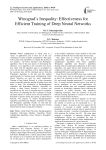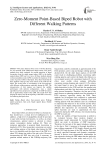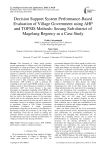International Journal of Intelligent Systems and Applications @ijisa
Статьи журнала - International Journal of Intelligent Systems and Applications
Все статьи: 1203

Winograd’s inequality: effectiveness for efficient training of deep neural networks
Статья научная
Matrix multiplication is widely used in a variety of applications and is often one of the core components of many scientific computations. This paper will examine three algorithms to compute the product of two matrices: the Naive, Strassen’s and Winograd’s algorithms. One of the main factors of determining the efficiency of an algorithm is the execution time factor, how much time the algorithm takes to accomplish its work. All the three algorithms will be implemented and the execution time will be calculated and we find that Winograd’s algorithm is the best and fast method experimentally for finding matrix multiplication. Deep Neural Networks are used for many applications. Training a Deep Neural Network is a time consuming process, especially when the number of hidden layers and nodes is large. The mechanism of Backpropagation Algorithm and Boltzmann Machine Algorithm for training a Deep Neural Network is revisited and considered how the sum of weighted input is computed. The process of computing the sum of product of weight and input matrices is carried out for several hundreds of thousands of epochs during the training of Deep Neural Network. We propose to modify Backpropagation Algorithm and Boltzmann Machine Algorithm by using fast Winograd’s algorithm. Finally, we find that the proposed methods reduce the long training time of Deep Neural Network than existing direct methods.
Бесплатно

Zero-Moment Point-Based Biped Robot with Different Walking Patterns
Статья научная
This paper addresses three issues of motion planning for zero-moment point (ZMP)-based biped robots. First, three methods have been compared for smooth transition of biped locomotion from the single support phase (SSP) to the double support phase (DSP) and vice versa. All these methods depend on linear pendulum mode (LPM) to predict the trajectory of the center of gravity (COG) of the biped. It has been found that the three methods could give the same motion of the COG for the biped. The second issue is investigation of the foot trajectory with different walking patterns especially during the DSP. The characteristics of foot rotation can improve the stability performance with uniform configurations. Last, a simple algorithm has been proposed to compensate for ZMP deviations due to approximate model of the LPM. The results show that keeping the stance foot flat at beginning of the DSP is necessary for balancing the biped robot.
Бесплатно

Статья научная
The increasing of village grants provider growth opportunities for villages every year. The Reliable performance of village governance is the main factor that determines the development of a village. In Secang, there are still many rural governance performances that are not optimal yet, therefore we need a system of performance evaluation of the village government. Decision support systems with a combination of AHP and TOPSIS models can be used to help evaluating performance village Government. AHP method is used to perform the weighting of the criteria and TOPSIS methods to make a ranking system of the performance evaluation of village government. AHP was chosen because it has many advantages of computation weighting while TOPSIS was efficient and able to measure the relative performance in a simple mathematical form. One advantage of the system that was built is the dynamic nature of the assessment criteria used for the calculation process, with menus for assessment criteria period the user can add or reduce the assessment criteria in accordance with the requirements or regulations. Output of DSS Village Government Performance Evaluation is village government performance ratings that can be used as a consideration in determining rewards and assistance to the village from the sub-district. From the test results on ranking and prototype, 86.67% of users agree that the prototype can be implemented and used to evaluate the performance of village government in the Secang sub-district.
Бесплатно

